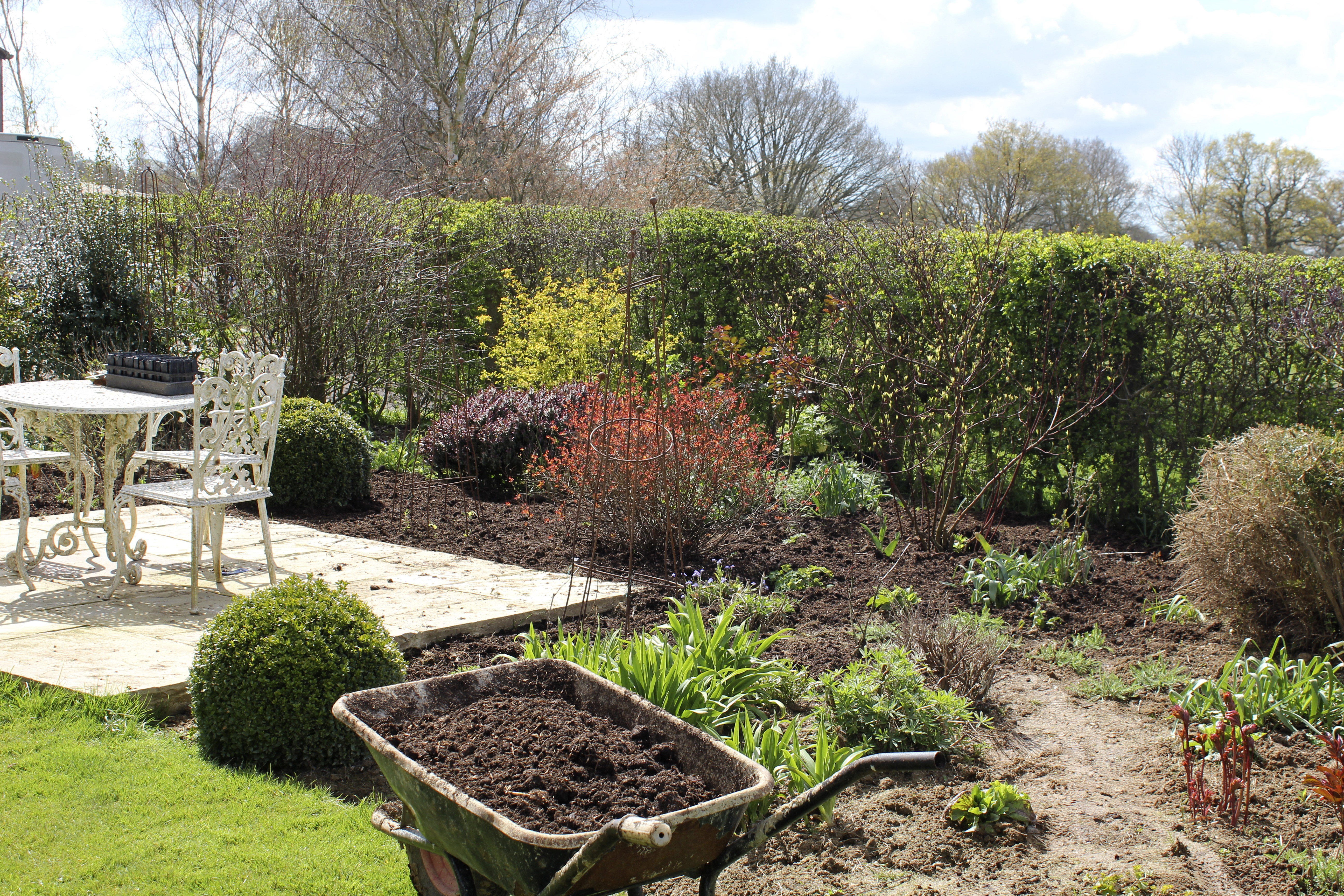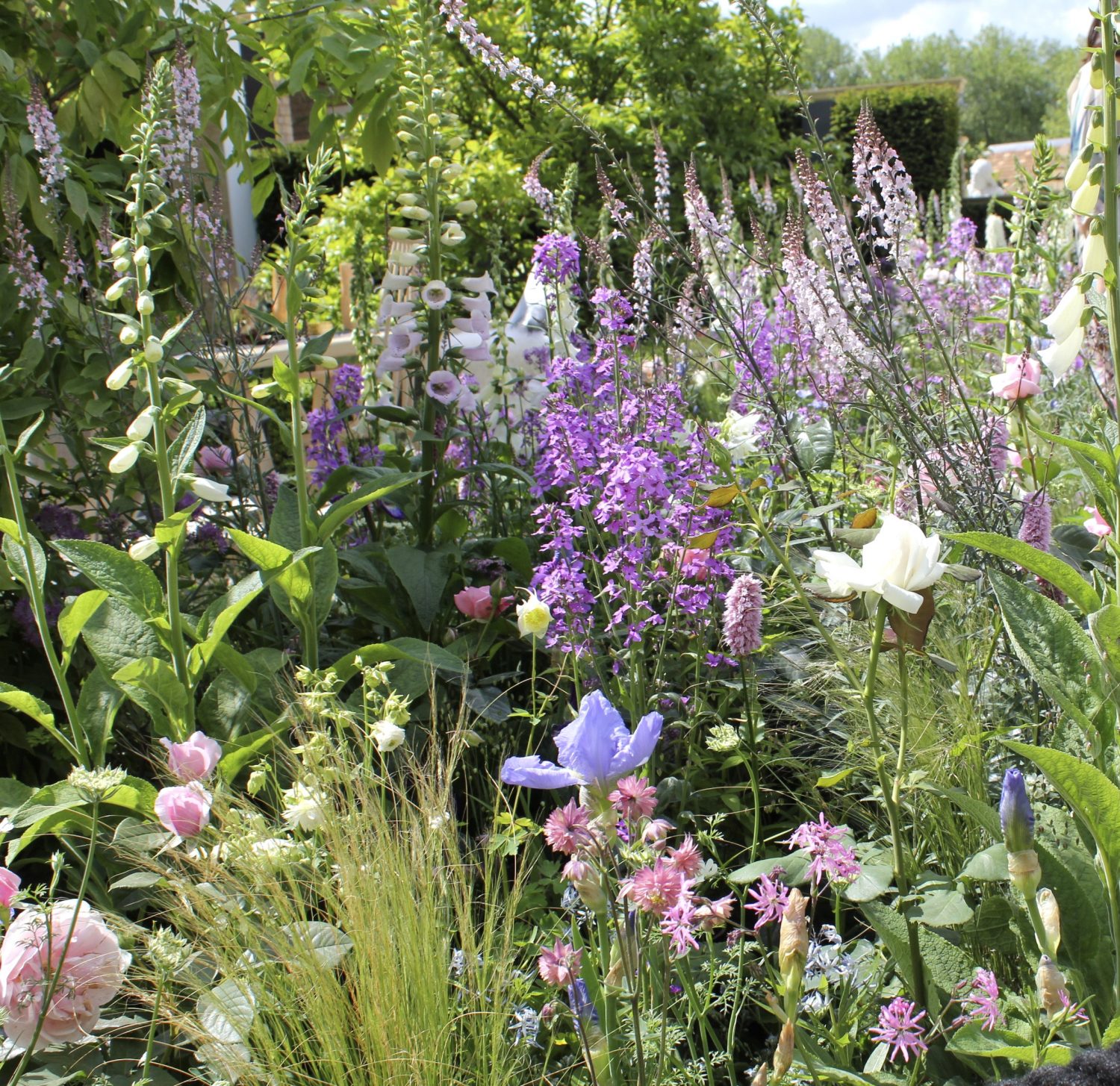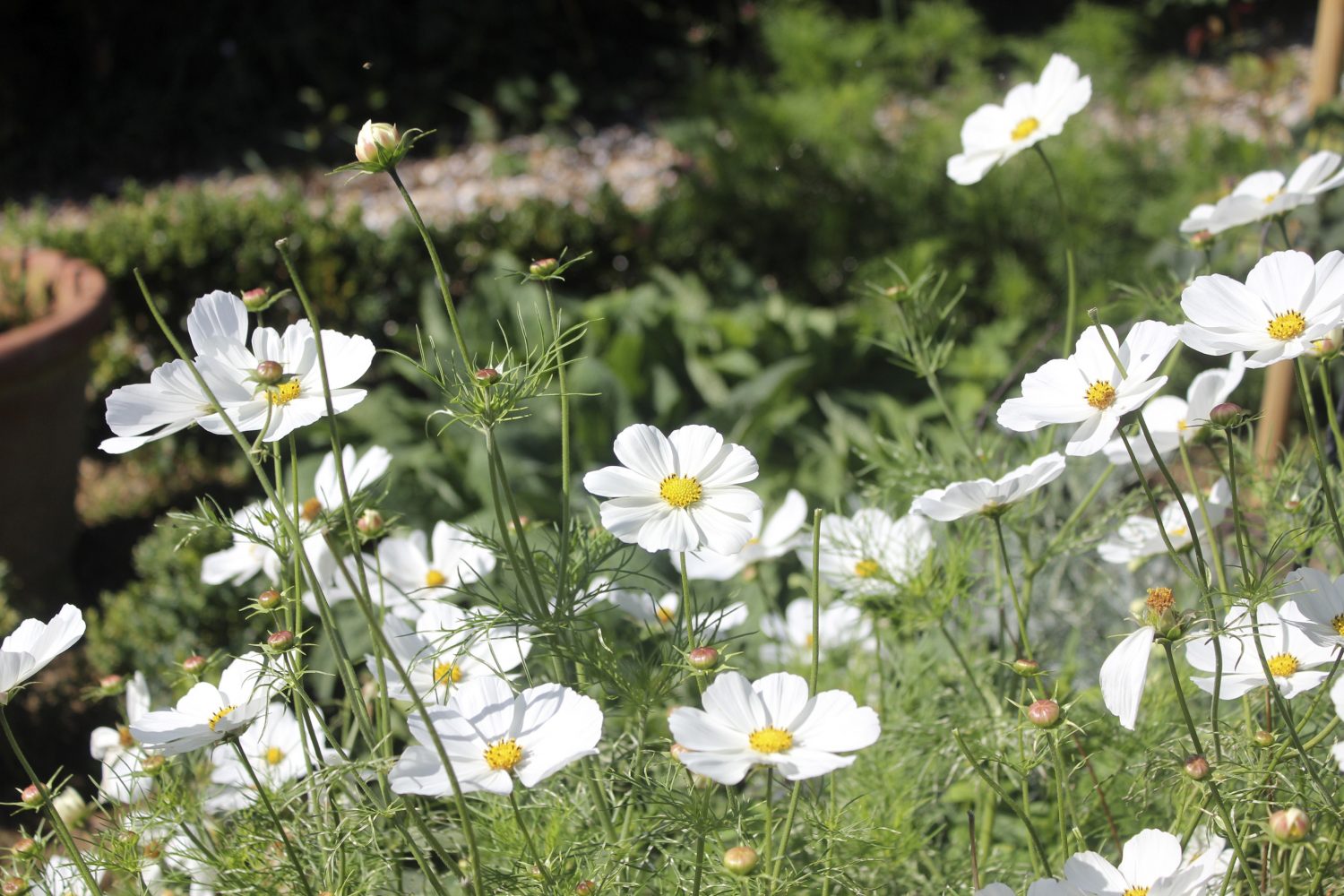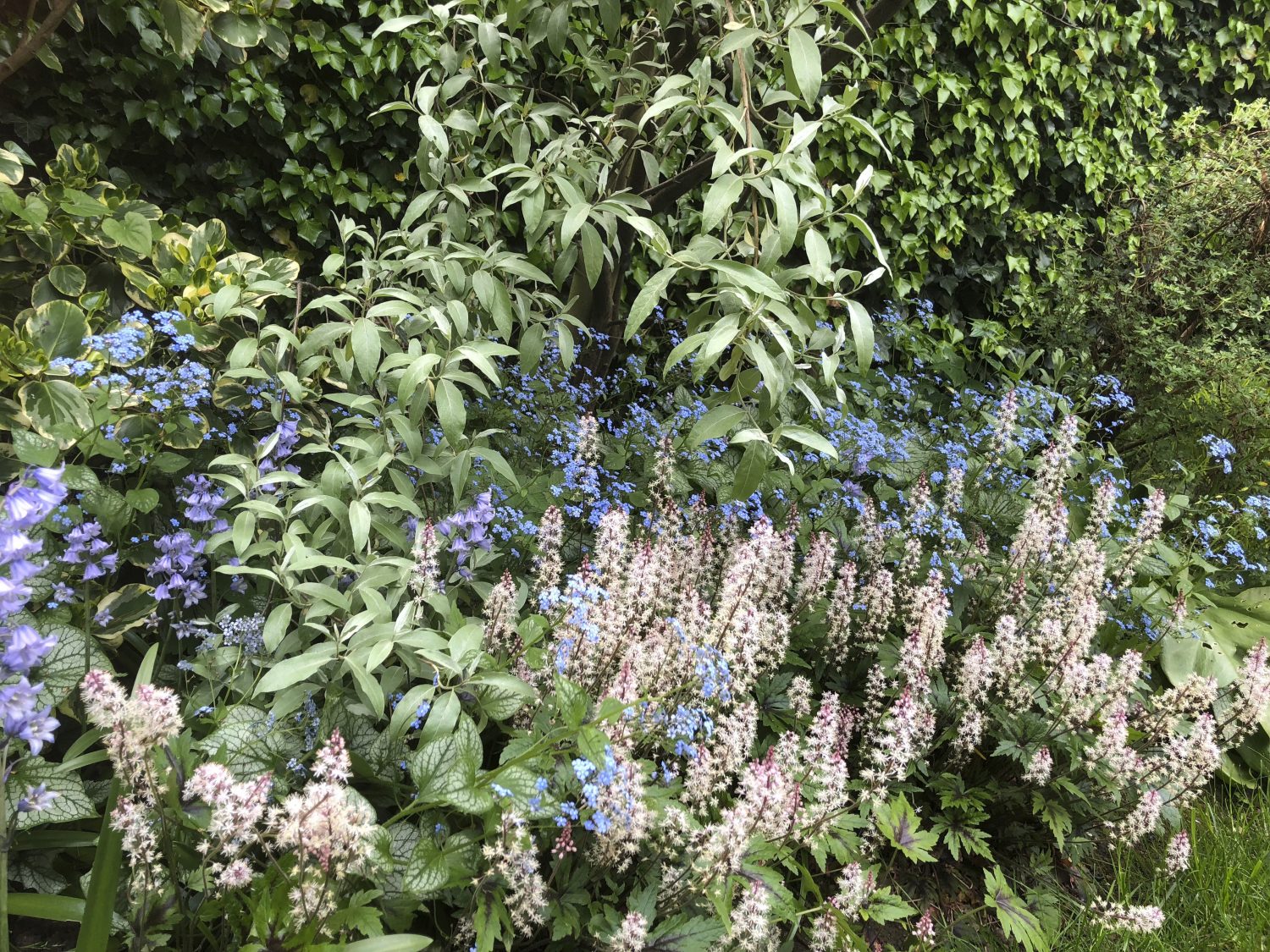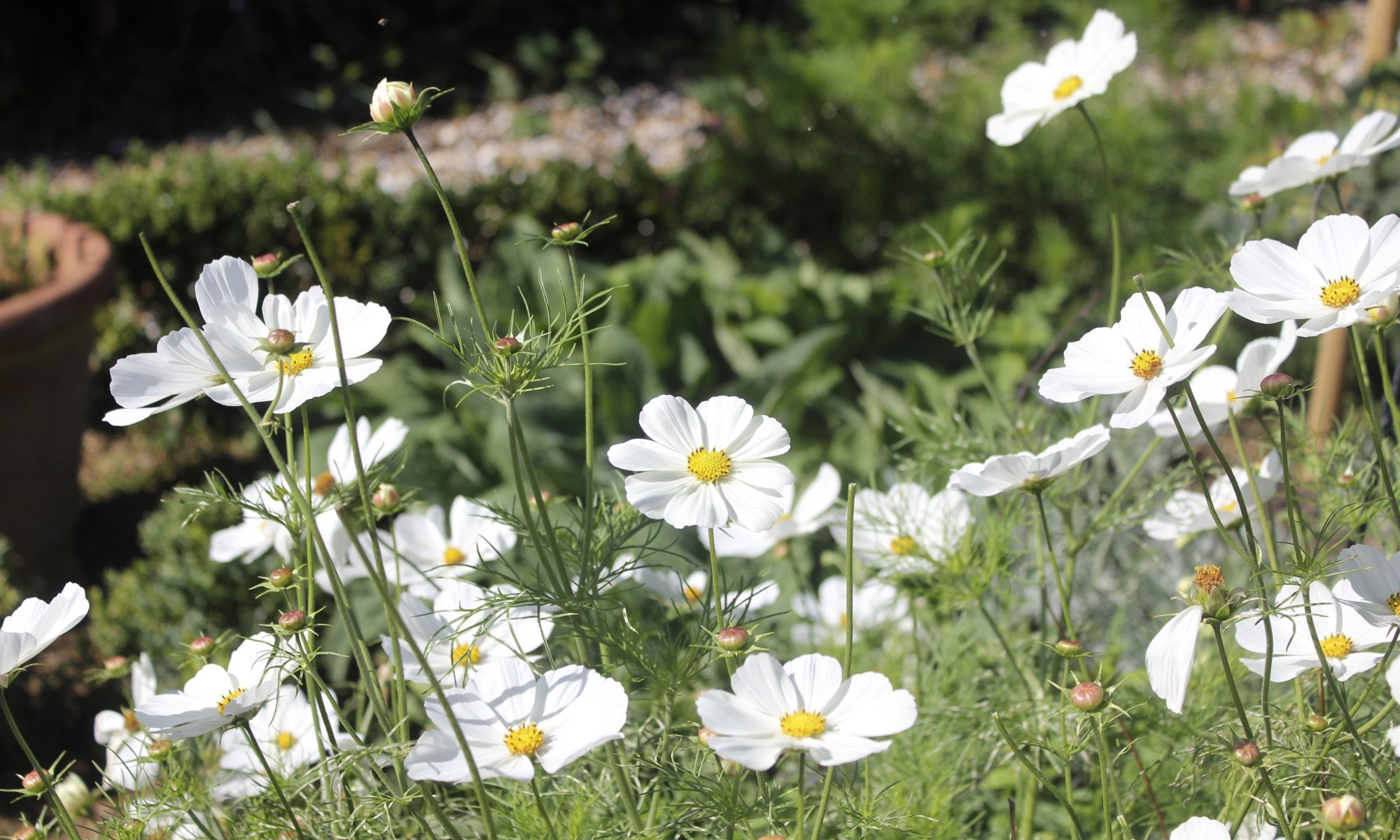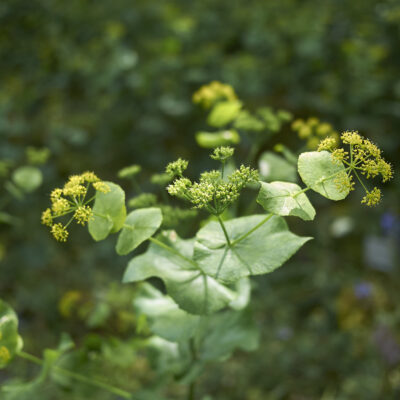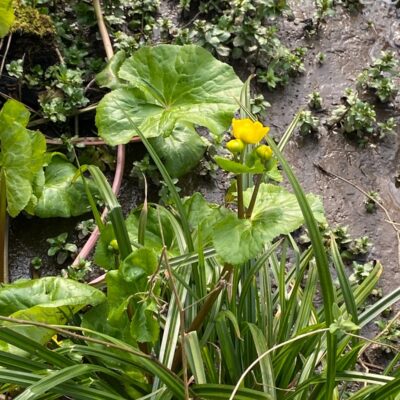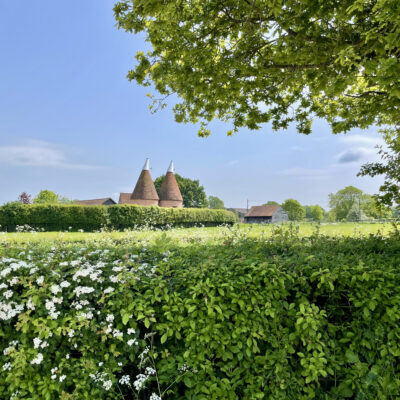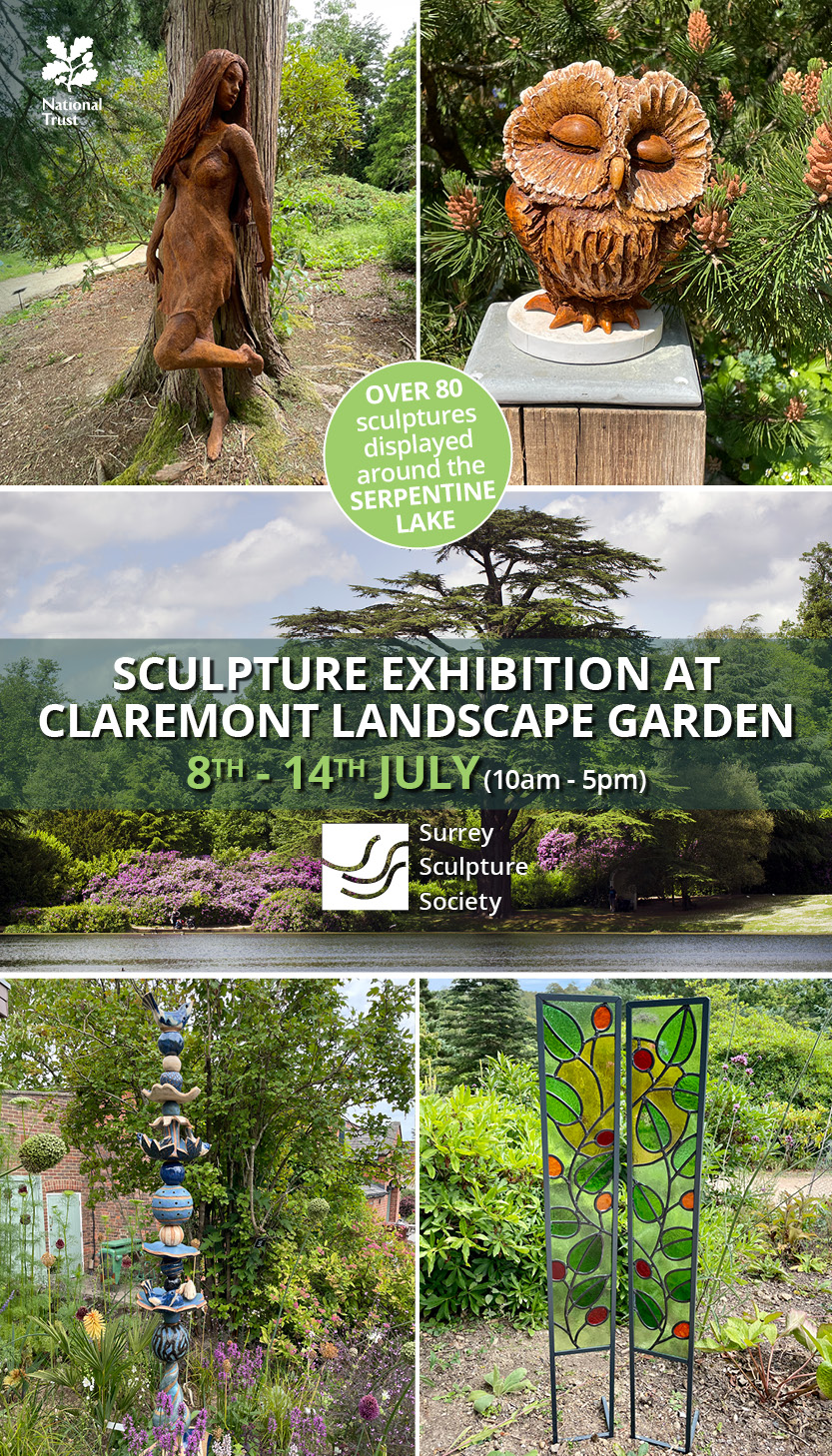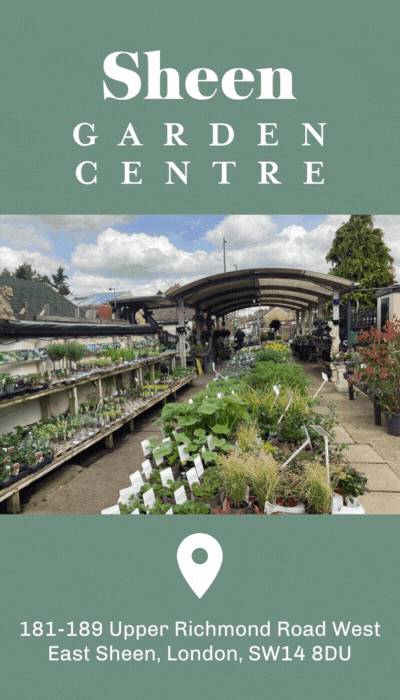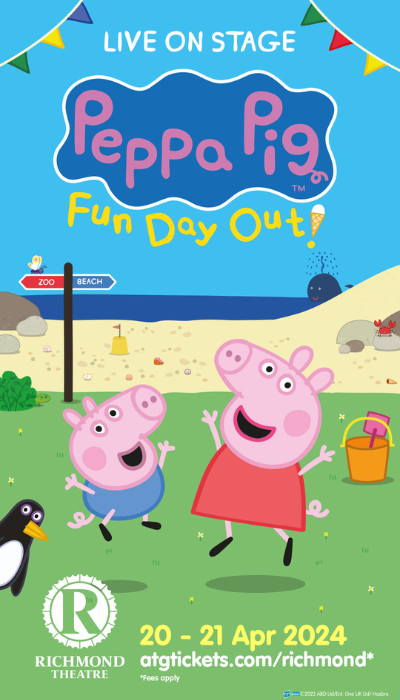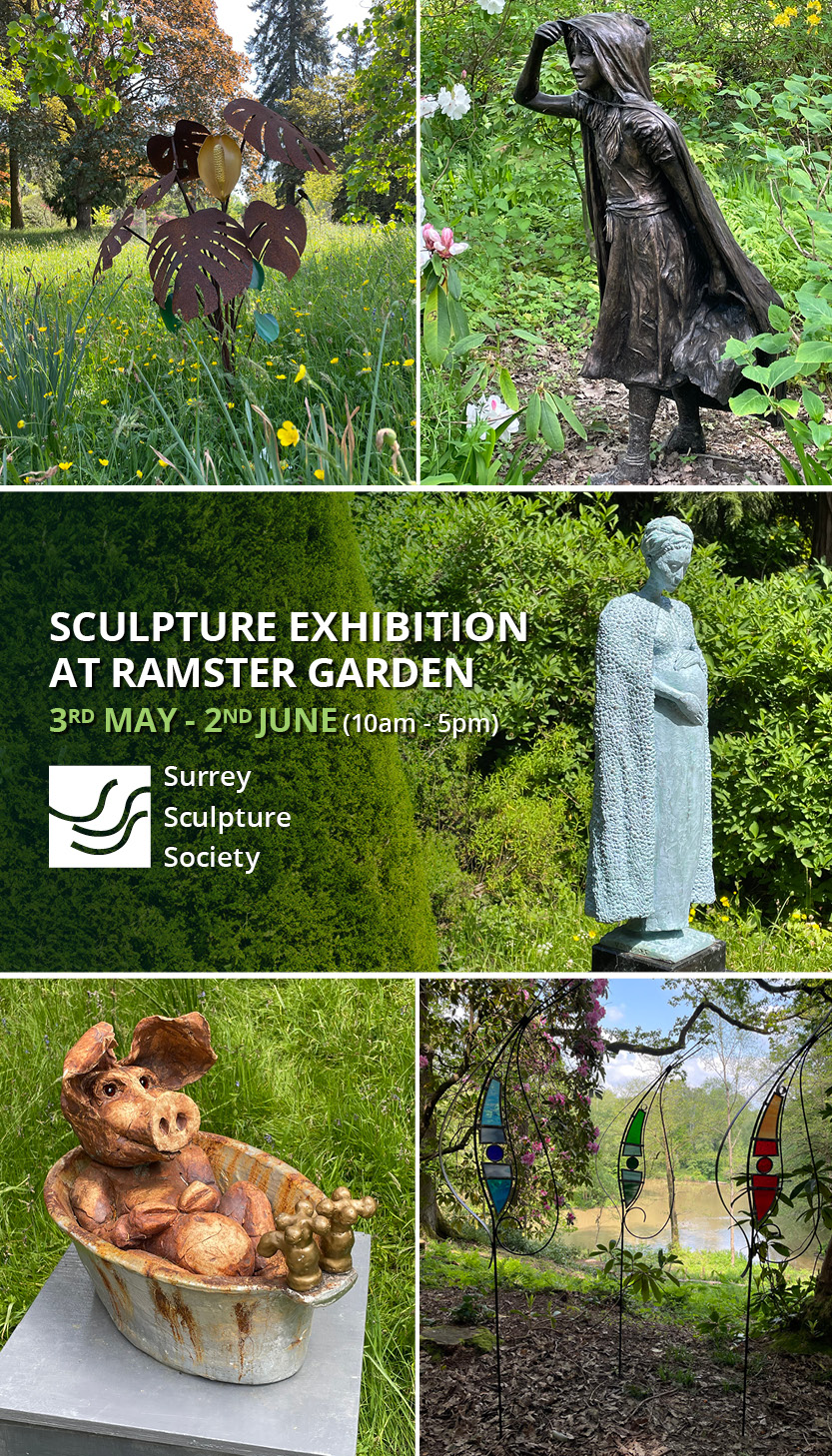Situation and aspect
Which way will the border face – will your plants look into the bright morning sun and then be in shade in the afternoon – or the direct opposite? Morning sun is east facing, afternoon is west. If the border is drenched in sunshine all day then it is south facing and if it plunged into shade for much of the day it faces north. Watch how the sun moves across the garden through the day, whether there are buildings, walls or trees that cast shade. If next door has a huge Leylandii hedge on their boundary it will be sucking moisture, goodness and light from your side too. Perhaps you are exposed to the elements, or in a frost pocket. The surrounding micro climate will have a huge impact on the growing conditions and may restrict the plants you’ll be able to happily grow.
Soil
Improve the soil in which the plants will put down their roots and they will reward you with healthy growth and plenty of flowers. Easy to say, sometimes hard to accomplish. Soil is a complex mixture of particles and living organisms that has formed over many millions of years, so it is almost impossible to change its fundamental nature, but you can improve what is there by adding organic matter. Most of the soil’s qualities will be dictated by the ground rock that lies beneath, including the pH (how acid or alkali it is), and the size of the rock particles. Large particles, like sand, will allow water (and nutrients) to drain quickly through them, whereas small particles like clay tend to stick together and hold onto water, becoming a mud bath in winter, but as hard as concrete in a long, dry summer. The best soil is somewhere in the middle. This is known as loam, or the gardeners’ Holy Grail.
You don’t need a soil testing kit necessarily, although this will give you a good idea of the soil’s pH. Go into the garden and pick up a handful of soil. Squeeze it firmly, then open out your hand again. If the soil stays in a ball, or feels sticky to the touch, it is clay. If, on the other hand, the handful feels gritty (you can easily see the particles) and it won’t stay in a ball, even when wet, then it is sandy. Loam (and lucky you if you have it), will almost form a ball when squeezed and then crumble nicely into a heap again. These are the three main types of soil, but yours could also be silty (silky, almost soapy to the touch) or peaty (spongy and fibrous).
Preparing for planting
All plants need soil that contains air, water and nutrients in order to grow. The structure of the soil needs to be hospitable to the plants’ roots – waterlogged soil will kill the fine roots and may cause disease. Soils that dry out too quickly in the summer will equally stress the plant, especially in its first two years, while root systems are establishing. Incorporating organic matter will help the soil structure, opening up a compacted soil and helping a poor, sandy soil to hold onto moisture and goodness. Applying a mulch after planting will also help to conserve moisture and keep the weeds down.
Weed seeds are lying in wait under the soil – some may have waited for many years – and will germinate as soon as they are brought near the surface by digging or cultivating. Perennial weeds need to be completely removed (including the roots), but annuals can just be hoed off. Do this with a sharp hoe and you’ll avoid disturbing the soil.
The plants
Planting up the border can feel like the most daunting part of the process; there are so many plants and they all grow slightly differently – and take up varying amounts of space in the border. Spacing is important when you are planting trees and shrubs, because they are going to be in position for a long time and are difficult (but not impossible) to move once established. Do not worry too much about the positioning of perennials; these will positively enjoy being lifted, divided and repositioned every few years.
Border design takes time to master, but understanding a little about the conditions that your plants need in order to thrive will help you to position them in the right place. The style of border is entirely down to personal taste and it is a broad canvas, but suiting the plants to their environment needs to come above just ‘wanting’ the plant. I have wasted a lot of time and money trying to get plants to grow in the wrong places just because I like their colour or habit, or just, well having to have them.
I tend to start with the framework plants and then work around them. I try – and this is not easy – to choose plants for their shape and how they will play their part in the border as a whole through the seasons. It might help to think of it like a production. There are the stars – you only need one or two of these (too much drama otherwise dahling) – then the other actors, the chorus and the dancing girls. Don’t forget the props, costumes and backdrops departments; these often go unsung, but the whole show would fall apart if you left it to the stars and the dancing girls. Think about the overall impact, rather than the individual plants and how it will change over the year, as the flowers come and go.
You can rush out and plant the whole border up at once, or you can take your time and add in plants every now and then, depending on the budget and the time available. Planning and planting a border is very rewarding, sometimes frustrating, but I like to think it’s completely achievable and comfort myself with the thought that even the Hanging Gardens of Babylon might have started off as a hanging basket.
Dry shade
Heleborus argutifolius – a tough evergreen with leathery, architectural leaves and pale limey-green flowers from February to April.
Buxus (box) – puts up with shade and inhospitable soil, but may succumb to box blight if grown in damp, enclosed spaces.
Mahonia ‘Charity’– another candidate with spiky leathery leaves with scented yellow flowers in the depths of winter.
Euonymus fortunii ‘Emerald Gaiety’ – a tough little stalwart, this variety has pretty variegated leaves.
Choisya ternata (Mexican orange) – glossy, dark green leaves and scented blossom in May.
Damp soil
Hosta ‘Sum and Substance’ – great big lush looking leaves. Hostas are slug-prone, but apparently this one is slightly resistant…
Cornus ‘Midwinter Fire’ – amazing winter bark in fiery shades on the mound stems.
Rheum palmatum – ornamental rhubarb with giant leaves.
Astilbe – dainty frothy plumes of flower in summer, likes damp soil, but not too much shade.
Iris pseudoacorus – an iris that likes to get its feet wet.
Hot, dry conditons
Sedum spectabile ‘Autumn Joy’ has succulent-type leaves, loved by butterflies and bees, this plant will patiently put up with most conditions.
Phlomis russelliana – grey sage type leaves with whorls of pale yellow flowers that fade into architectural seed heads.
Iris (bearded) – good strappy leaves, likes to bake in the sun.
Stachys – soft felty leaves like ‘lamb’s ears’ – this plant will spread if you let it.
Cistus (Rock Rose) – an evergreen flowering in June/July, it will put up with poor, dry soil.
See Jo Arnell in the Home & Garden Hub at Wealden Times Midsummer Fair this June
Contact Jo for details of 2019 gardening courses
01233 861149 hornbrookmanor.co.uk
